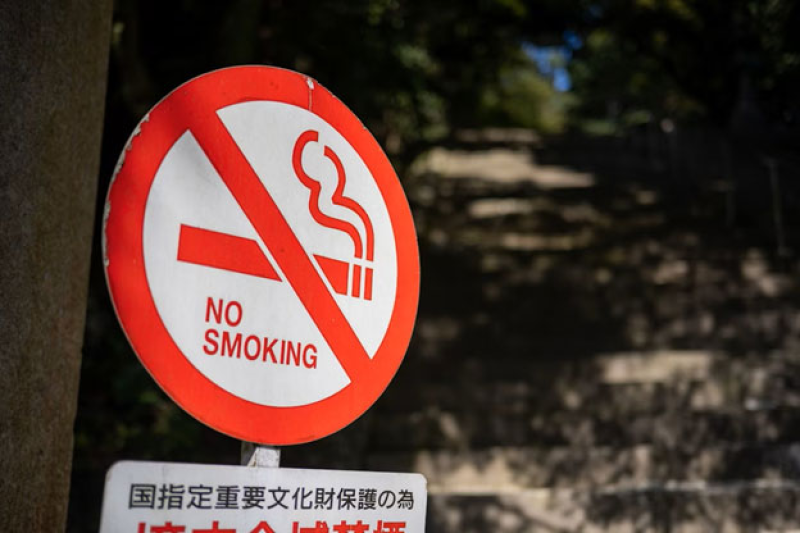- Observe July Uprising Annually to Guard Against Autocracy |
- Human Rights a Key Driver of Climate Change Progress |
- Security measures at Shahjalal Airport enhanced |
- Polls in early next year: Prof Yunus tells Marco Rubio |
- Bangladesh’s Apparel Exports to US Hit $7.34bn in Decade |
Global Tobacco Control Efforts Protect Up to 6.1 Billion People

Over 7 million people die from smoking-related deaths every year. The World Health Organization’s protocols to control and reduce tobacco have been adopted in at least 155 countries.
Tobacco kills up to half its users who don’t quit, a grim reality that highlights the urgent mission of global tobacco control. A new report from the World Health Organization (WHO) reveals that while many countries have followed the organization’s protocols to reduce tobacco use, major gaps still remain in broader implementation.
The Global Tobacco Epidemic 2025 report was launched on June 23 at the World Conference on Tobacco Control in Dublin, where global health leaders emphasized a renewed commitment towards reducing tobacco-related deaths, which claim more than seven million lives each year. At least 80 percent of the world’s 1.3 billion tobacco users live in low- and middle-income countries, where the risk of tobacco-related illness and death is much higher.
The report focuses on the WHO MPOWER tobacco control measures, the steps that countries need to take to reduce tobacco usage. The WHO MPOWER tobacco control measures include:
· Monitoring tobacco use and prevention policies;
· Protecting people from tobacco smoke with smoke-free air legislation;
· Offering help to quit tobacco use;
· Warning about the dangers of tobacco with pack labels and mass media;
· Enforcing bans on tobacco advertising, promotion, and sponsorship; and
· Raising taxes on tobacco.
The WHO MPOWER measures were first introduced in 2007, when only forty-four countries had implemented at least one tobacco control measure, protecting 1.2 billion people. Their implementation can be viewed through the new data portal, which tracks countries’ progress from 2007–2025.
One hundred fifty-five countries have successfully implemented at least one control measure at the best-practice level, the highest marker of implementation. This protects up to 6.1 billion people, or about 75 percent of the global population. Additionally, countries with two or more measures have seen “a nearly tenfold increase,” from 11 to 107 countries, which protects 4.8 billion people. Forty of these countries have adopted two or more measures, while seven of them have implemented four measures, and four have adopted five of the MPOWER measures. Altogether, fifty-one countries have at least three of these measures in place, accounting for the protection of 1.8 billion people.
Dr. Tedros Adhanom Ghebreyesus, WHO Director-General, said, “Twenty years since the adoption of the WHO Framework Convention on Tobacco Control, we have many successes to celebrate, but the tobacco industry continues to evolve and so must we.” He added, “By uniting science, policy, and political will, we can create a world where tobacco no longer claims lives, damages economies or steals futures. Together, we can end the tobacco epidemic.”
The report highlights that one practice — graphic health warnings and plain packaging — has made significant progress, with 56 percent of countries having reached the ‘best-practice’ level. As one of the key measures under the WHO Framework Convention on Tobacco Control (FCTC), it makes it difficult for people to ignore the health risks. It has been proven that cigarette packaging that contains graphic visual health warnings is effective in informing people about tobacco risks. They can be understood by people across all demographics and countries of all income levels.
Additionally, 110 countries at some levels have adopted these measures, accounting for approximately five billion people, or 62 percent of the world’s population. Thirty-six percent of the global population now live in countries that run best-practice campaigns, which is up from 19 percent in 2022. WHO is urging countries to “invest in message-tested evaluated campaigns.”
Despite this, forty countries have zero MPOWER measures at the best-practice level. More than thirty countries allow the sale of cigarettes without mandatory health warnings. Even as many of the measures are being adopted, WHO notes that enforcement is “inconsistent.” Packaging for smokeless tobacco remains “poorly regulated,” as these items come in irregular packaging, are developed by smaller local producers, and may be found illegally produced and sold. These factors make it difficult to enforce packaging regulations. Furthermore, since 2022, at least 110 countries have failed to run anti-tobacco campaigns.
Many countries are failing to enact policies that would restrict access to cigarettes through taxation. Since 2022, only three countries have increased their taxes on tobacco at the best-practice level. Sixty-eight countries have adopted anti-tobacco media campaigns at the best practice, educating 25 percent globally. Additionally, cost-covered quitting services are accessible to about 33 percent of the world’s population.
While media campaigns and taxation policies target tobacco users, tobacco also affects people secondhand. Around 1.6 million people die each year from cardiovascular and respiratory diseases exacerbated by exposure to secondhand smoke. To combat this, seventy-nine countries have implemented “comprehensive smoke-free environments,” which protect at least one-third of the global population. The regulation of e-cigarette devices or ENDS (Electronic Nicotine Delivery Systems) has also begun to pick up traction. As of 2024, 133 countries are regulating or outright banning e-cigarette devices.
To account for the notable lags in progress and enforcement, Dr. Ruediger Krech, WHO Director of Health Promotion, said, “Governments must act boldly to close remaining gaps, strengthen enforcement, and invest in the proven tools that save lives. WHO calls on all countries to accelerate progress on MPOWER and ensure that no one is left behind in the fight against tobacco.”

